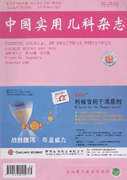Objective To investigate the characteristics of Streptococcus pyogenes (Group A Streptococcus, GAS) isolated from Chinese children with impetigo.Methods The sensitivity of 52 GAS to nine antibiotics (penicillin,cephadine, ofloxacin, chloramphenicol, tetracycline, erythromycin, clarithromycin, clindamycin and azithromycin) was measured as minimal inhibitory concentration (MICs). The macrolide-resistance genes and M protein gene (emm gene) were detected by polymerase chain reaction (PCR).Results Among 52 GAS strains isolated from 1735 patients with impetigo, 100% (52/52) were resistant to tetracycline and the macrolide antibiotics erythromycin, clarithromycin, clindamycin and azithromycin; No isolates were detected with both ermB and ermA, and no isolates were detected with the mefA gene. The most common strains were emm 12.0 (28/52, 53.85% ), and emm 1.0 (19/52, 36.54%). Rare strains were emm 4.0 (1/52, 1.92%), emm 8.0(1/52, 1.92%), emm 22.0 (1/52, 1.92%), emm 101 (1/521.92%), and emm 114 (1/52, 1.92%).Conclusion The most prevalent types were emm1.0 and emm12.0. GAS strains had a high percentage of resistance to macrolide antibiotics and tetracycline. Most expressed the ermB gene and were sensitive to penicillin,cephadine and ofloxacin.

